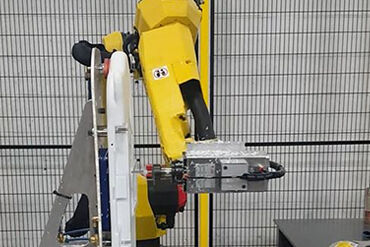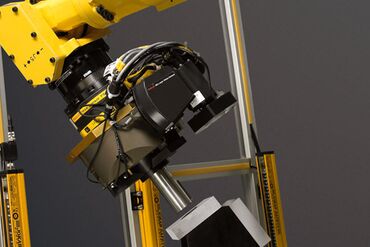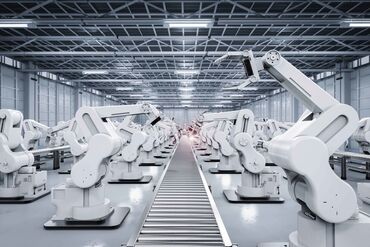- All
- Featured
- Green Initiatives
- Industrial Robots
- Refurbished Robots
- Welding

Industrial Welding Robots Improve Your Profitability and Productivity
According to Intrado GlobeNewswire, the global robotic welding market size was valued at $5.5 million in 2018, and is projected to reach $10.5 million by 2026, growing at a CAGR of 8.7% from 2019 to 2026. These numbers are no accident, as the market implements Industry 4.0, manufacturers will continue to seek ways to improve operations through automation. With no shortage of robotic welding equipment, the heavy investment by various industries in robotics technology has encouraged the further development of automated welding.

Protecting Product Integrity with Food Packaging Robots
Industrial robots in the food packaging industry helps to protect the product integrity. The food packaging robots can conduct operations in picking, packing, and palletizing, and can also be used for meat cutting and beverage dispensing. Converting your process to automated packaging system can help cut costs, decrease floor space limitation, increase productivity, and address product integrity.

Is a Refurbished Robot Right for my Business?
Refurbished robots are repaired, rebuilt, and cleaned in order to re-enter the automation market. They are also called re-manufactured, reconditioned, or rebuilt robots.

Building an Effective Welding Cell: A How-To Guide
It is important to plan a welding workcell out to optimize your production line. You must consider a positioner, safety package, and other key elements in order to complete the perfect welding cell.

Robot Manipulators
An industrial robot is comprised of a robot manipulator, power supply, and controllers. Robotic manipulators can be divided into two sections, each with a different function.

What are the Different Types of Robots?
There are six different types of industrial robots: cartesian, SCARA, cylindrical, delta, polar and vertically articulated. However, there are several additional types of robot configurations.

What are autonomous industrial robots?
Autonomous robots can learn their environments and work without breaks. They can use infrared or ultrasound sensors to help increase their precision and accuracy. Depending on your production needs, there is an exact or customized solution for you through Robots.com.

Introduction to Collaborative Robots
Topics include definitions and terminology of collaborative robots, a brief history, applications, advantages and disadvantages, and programming techniques.

Arc Welding Robots 101
Robotic arc welding is becoming increasingly more popular as technology continues to advance and automation systems become more affordable. Automated arc welding is able to accurately and consistently produce quality welds, providing for a happy and satisfied manufacturer and customer.

What Are Six Axis Robots?
Industrial robots have various axis configurations. The vast majority of articulated robots, however, feature six axes, also called six degrees of freedom. 6-axis robots allow for greater flexibility and can perform a wider variety of applications than robots with fewer axes.

Fanuc Similarities – the M-16iB/20, ArcMate 120iBe, and M-20iA
Fanuc robots makes a wide range of systems available to help solve your production needs. Three ARC Mate robots that are versatile and can perform a multitude of processes include the 120iBE, the M-16iB/20, and the M-20iA robot. They have a great repeatability and reach and will improve the overall product quality of your production line.

Plasma Arc Welding Advantages and Limitations
Industrial robots are able to do a variety of welding tasks including plasma arc welding. Plasma arc welding is an extension of gas metal tungsten welding that produces an amazing amount of control and quality product.









